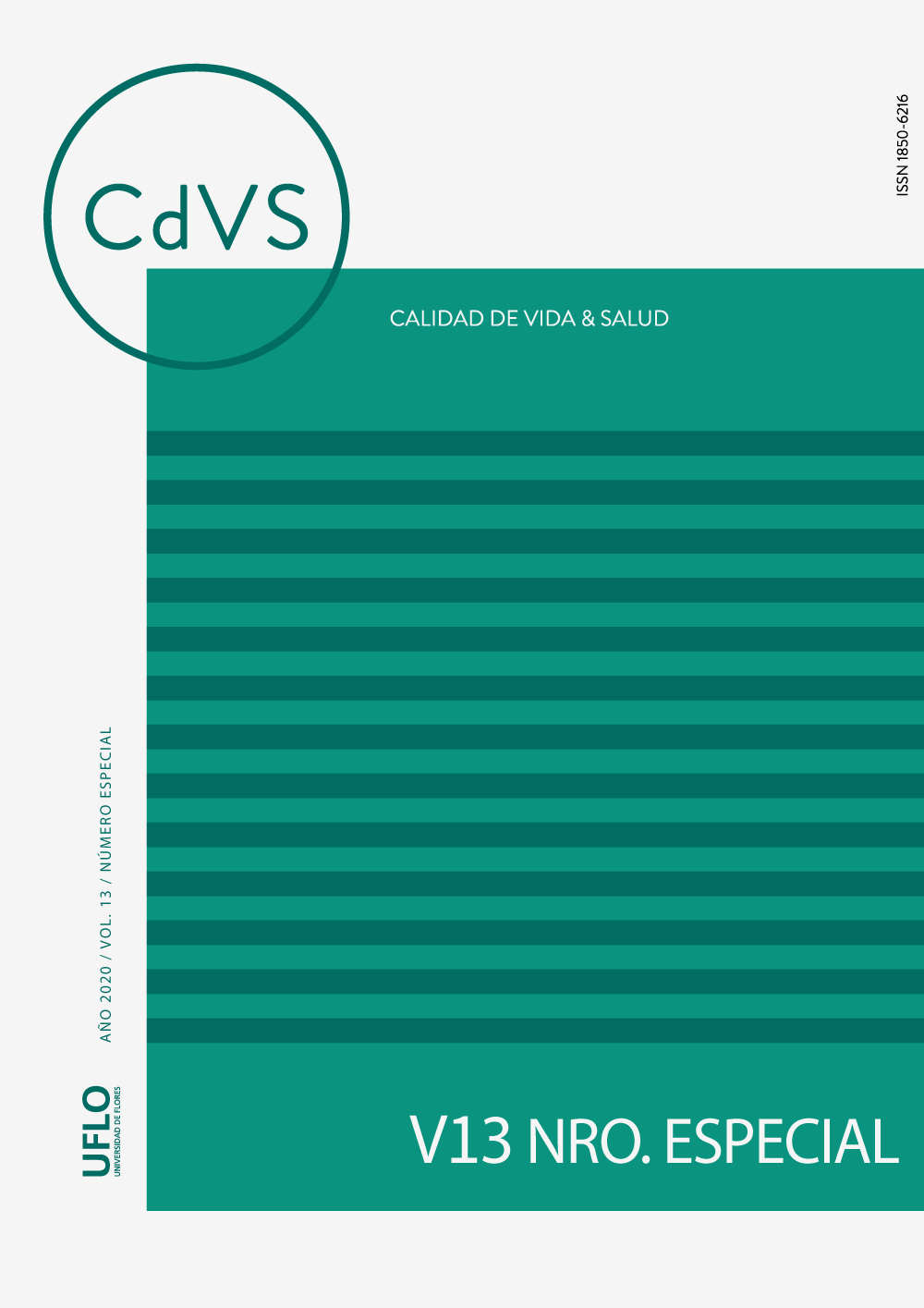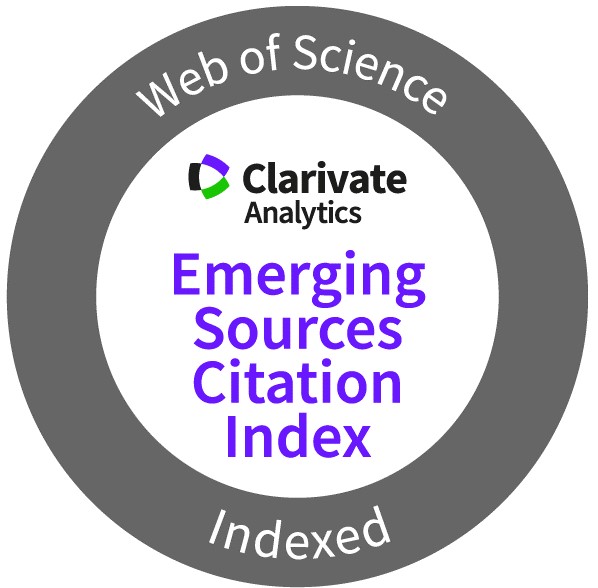Sexo humano-animal, más allá de los prejuicios. ¿Qué aportan las investigaciones?
Palabras clave:
Bestialismo, parafilias, prejuicios, tabú, zoofiliaResumen
Las relaciones sexuales entre humanos y animales han existido desde los albores de la humanidad en todos los lugares y culturas del mundo. Pese a conformar la parafilia que se presume más frecuente, la zoofilia/bestialidad se encuentra muy poco estudiada, posiblemente a partir del tabú social que genera. Este trabajo se propuso confrontar los prejuicios en torno al sexo humano-animal con los datos de las investigaciones más recientes desarrolladas. Los datos ponen en evidencia una amplia variabilidad existente entre las personas que practican sexo con animales. Adicionalmente, permiten rechazar las creencias de que el sexo humano-animal se asocia con áreas rurales, animales de granja, que sus practicantes tengan discapacidad intelectual o trastornos
mentales severos o que lo hagan bajo efecto de alcohol y drogas. Además, se rechaza la idea de que el bestialismo se desarrolle netamente como una práctica casual o que se deba a la privación sexual con otros humanos. La naturaleza abusiva de sus practicantes es discutida, así como también que el sexo humano-animal sea empleado en la actualidad como una forma de experimentación sexual adolescente. Finalmente, se concluye destacando la necesidad de realizar discusiones abiertas sobre el tema, promoviendo la investigación y evitando los prejuicios, fundamentalmente en los profesionales dedicados al abordaje clínico de humanos y animales.
Citas
Aggrawal, A. (2011). A new classification of zoophilia. Journal of Forensic and Legal Medicine, 18(2), 73-78. DOI: 10.1016/j.jflm.2011.01.004
Allport, G. W., Clark, K., & Pettigrew, T. (1954). The nature of prejudice. Addison-Wesley.
Alvarez, W. A., & Freinhar, J. P. (1991). A prevalence study of bestiality (zoophilia) in psychiatric in-patients, medical in-patients, and psychiatric staff. International Journal of Psychosomatics, 38(1-4), 45-47.
American Psychiatric Association [APA]. (1984). DSM III: Manual Diagnóstico y Estadístico de los Trastornos Mentales, 3era Edición: Texto revisado. Barcelona: Masson.
American Psychiatric Association [APA]. (1994). DSM IV: Manual Diagnóstico y Estadístico de los Trastornos Mentales, 4ta Edición. Barcelona: Masson.
American Psychiatric Association [APA]. (2013). DSM 5: Diagnostic and Statistical Manual of Mental Disorders, 5th. Edition. Washington: American Psychiatric Association.
Bagley, C. (1968). A comparative study of mental illness among immigrant groups in Britain. Revue Ethnies, 1, 24 –36.
Beetz, A. M. (2002). Love, violence, and sexuality in relationship between humans and animals. Aachen: Shaker Verlag.
Beetz, A. M. (2004). Bestiality/zoophilia: A scarcely investigated phenomenon between crime, paraphilia, and love. Journal of Forensic Psychology Practice, 4(2), 1-36. DOI: 10.1300/J158v04n02_01
Beetz, A. M. (2005a). Bestiality and zoophilia: Associations with violence and sex offending. In A. Beetz & A. Podberscek (Eds.), Bestiality and zoophilia (pp. 46-70). Oxford/New York: Berg.
Beetz, A. M. (2005b). New insights into bestiality and zoophilia. In A. Beetz & A. Podberscek (Eds.), Bestiality and zoophilia (pp. 98-119). Oxford/New York: Berg.
Beirne, P. (2000). Rethinking bestiality: Towards a concept of interspecies sexual assault. In A. Polderseck, E. Paul, & J. Serpell (Eds.), Companion animals and us: Exploring the relationships between people and pets (pp. 311-331). New York: Cambridge University Press
Blevins, R. O. (2009). A case of severe anal injury in an adolescent male due to bestial sexual experimentation. Journal of forensic and legal medicine, 16(7), 403-406. DOI: 10.1016/j.jflm.2009.02.001
Bolliger, G., & Goetschel, A. F. (2005). Sexual relations with animals (zoophilia): An unrecognized problem in animal welfare legislation. In A. Beetz & A. Podberscek (Eds.), Bestiality and zoophilia (pp. 23-45). Oxford/New York: Berg.
Camáñez Mont, R. M., & Salmerón Sánchez, P. (2016). Aproximación inicial a las actitudes del profesional sanitario hacia la diversidad sexual. Master Thesis. Universitat Jaume I, Castellón.
Chandradasa, M., & Champika, L. (2017). Zoophilia in an adolescent with high-functioning autism from Sri Lanka. Australasian Psychiatry, 25(5), 486-488. DOI: 10.1177/1039856217715997
Dekkers, M. (1994). Dearest pet: On bestiality. London: Verso.
Duffield, G., Hassiotis, A., & Vizard, E. (1998). Zoophilia in young sexual abusers. The Journal of Forensic Psychiatry, 9(2), 294-304. DOI: 10.1080/09585189808402198
Eagly, A. H., & Diekman, A. B. (2005). What is the problem? Prejudice as an attitude-in-context. In J. F. Dovidio, P. Glick, & L. Rudman (Eds.), On the nature of prejudice: Fifty years after Allport (pp. 19–35). Malden, MA: Blackwell.
Earls, C. M., & Lalumiere, M. L. (2009). A case study of preferential bestiality. Archives of Sexual Behavior, 38(4), 605-609. DOI: 10.1007/s10508-007-9285-x
Fehlow, P. (1985). Zur Relevanz der Sodomie im Jugendalter. Psychiatrie, Neurologie und Medizinische Psychologie, 37(4), 228-233.
Ferrari, M., Revollo, A., Cuellar, J., Manzanelli, F., Valdi, A. L., Reyes Plazaola, P., & Díaz Videla, M. (en evaluación). Trastornos por atracción sexual hacia los animales: Propuesta de clasificación basada en una revisión de la literatura.
Flores de la Flor, M. A. (2009). Los Monstruos en la Edad Moderna en el Mundo Hispánico. Tesis de Maestría. Universidad de Cádiz, España.
Freud, S. [1905] (1962). Three essays on the theory of sexuality, trans. James Strachey. New York: Harper Torchbooks, 22, 44-50.
Goetschel, A. F., & Bolliger, G. (2003). Das Tier im Recht-99 Facetten der Mensch-Tier-Beziehung von A bis Z, Zürich.
Hensley, C., Tallichet, S. E., & Dutkiewicz, E. L. (2010). Childhood bestiality: A potential precursor to adult interpersonal violence. Journal of interpersonal violence, 25(3), 557-567. DOI: 10.1177/0886260509360988
Herek, G. M. (2004). Beyond “homophobia”: Thinking about sexual prejudice and stigma in the twenty-first century. Sexuality Research & Social Policy, 1(2), 6-24. DOI: 10.1525/srsp.2004.1.2.6
Johnson, J. D., & Lecci, L. (2003). Assessing anti-white attitudes and predicting perceived racism: The Johnson-Lecci scale. Personality and Social Psychology Bulletin, 29(3), 299-312. DOI: 10.1177/0146167202250041
Kinsey, A. C., Pomery, W. B., & Martin, C. E. (1948). Sexual behavior in the human male. Philadelphia: W. B. Saunders.
Kinsey, A. C., Pomeroy, W. B., Martin, C. E., & Gebhard, P. H. (1953). Sexual behavior in the human female Philadelphia. B. Saunders Co.
Leal, O. M. F. (1989). The Gauchos: male culture and identity in the Pampas. Doctoral Dissertation. University of California, Berkeley.
Lesandrić, V., Orlović, I., Peitl, V., & Karlović, D. (2017). Zoophilia as an early sign of psychosis. Alcoholism and psychiatry research: Journal on psychiatric research and addictions, 53(1), 27-32. DOI: 10.20471/apr.2017.53.01.03
Massen, J. (1994). Zoophilie: die sexuelle Liebe zu Tieren; Informationen zu einem sexuellen Tabu. Pinto-Press.
Masters, W. H., & Johnson, V. E. (1962). The sexual response cycle of the human female. The clitoris: anatomic and clinical consideration. Western journal of surgery, obstetrics, and gynecology, 70, 248-257.
Miletski, H. (1999). Bestiality/zoophilia—An exploratory study. Doctoral dissertation. The Institute for Advanced Study of Human Sexuality, San Francisco, USA.
Miletski, H. (2001). Zoophilia—Implications for therapy. Journal of Sex Education and Therapy, 26(2), 85-89. DOI: 10.1080/01614576.2001.11074387
Miletski, H. (2002). Understanding bestiality and zoophilia. Bethesda: East West Publishing.
Miletski, H. (2005). Is zoophilia a sexual orientation? A study. In A. Beetz & A. Podberscek (Eds.), Bestiality and zoophilia (pp. 82-97). Oxford/New York: Berg.
Munro, H. M., & Thrusfield, M. V. (2005). “Battered pets:” sexual abuse. In A. Beetz & A. Podberscek (Eds.), Bestiality and zoophilia (pp. 82-97). Oxford/New York: Berg.
Othman, Z., Ab Razak, A., & Zakaria, R. (2014). Zoophilia in a patient with frontotemporal dementia. International Medical Journal, 21(5), 1-2.
Peretti, P. O., & Rowan, M. (1982). Variables associated with male and female chronic zoophilia. Social Behavior and Personality: an international journal, 10(1), 83-87. DOI: 10.2224/sbp.1982.10.1.83
Ramos, E. (2015). Prejuicios y tabúes sexuales prevalentes en los jóvenes Universitarios. Entorno, 1(14), 39-57.
Rosenberger, J. R. (1968). Bestiality. Medco Books.
Rosenfeld, J. R. (1967). The animal lovers. Atlanta, GA: Pendulum Books.
Rosenbauer, F. (1997). Sexual contact with animals. Master thesis in the event "Sexual Disorders". Siegen. Disponible en: http://www.rosenbauer.de/ha-zo.htm
Rubin, G. (1984). Thinking sex: Notes for a radical theory of the politics of sexuality. Social perspectives in Lesbian and Gay Studies; A reader, 100-133. DOI: 10.4324/9781315006185
Ruiz, M. A., & Villalobos, A. (1994). Habilidades terapéuticas. Madrid: Fundación Universidad-Empresa.
Schmidt, W. (1969). Neurosenpsychologische Aspekte der Sodomie. Doctoral Dissertation. Universitat Munchen, Ludwig-Maximilians.
Sendler, D. J. (2017). Similar mechanisms of traumatic rectal injuries in patients who had anal sex with animals to those who were butt-fisted by human sexual partner. Journal of forensic and legal medicine, 51, 69-73. DOI: 10.1016/j.jflm.2017.07.014
Sendler, D. J. (2019). Contemporary understanding of zoophilia—A multinational survey study. Journal of forensic and legal medicine, 62, 44-51. DOI: 10.1016/j.jflm.2018.12.010
Sendler, D. J., & Lew-Starowicz, M. (2018). Digital ethnography of zoophilia—A multinational mixed-methods study. Journal of sex & marital therapy, 10, 1-20. DOI: 10.1080/0092623X.2018.1474405
Serpell, J. (1996). In the company of animals: A study of human-animal relationships. Cambridge University Press.
Ullerstam, L. (1966). The erotic minorities. Grove Press.
Waine, W. W. (1968). Canine sexualis. San Diego: Publisher’s Export, Inc.
Wilcox, D. T., Foss, C. M., &, Donathy, M. L. (2005). A case study of a male sex offender with zoosexual interests and behaviours. Journal of Sexual Aggression, 11(3), 305-317. DOI: 10.1080/13552600500333804
Williams, C. J., & Weinberg, M. S. (2003). Zoophilia in men: A study of sexual interest in animals. Archives of Sexual Behavior, 32(6), 523-535. DOI:10.1023/A:1026085410617
Wilson, G. D. (1987). An ethological approach to sexual deviation. In G.D.Wilson (Ed.), Variant sexuality: research and theory (84-115). London: Croom-Helm.
Zequi, S. D. C., Guimarães, G. C., da Fonseca, F. P., Ferreira, U., de Matheus, W. E., Reis, L. O., & Guidoni, L. R. M. (2012). Sex with animals (SWA): behavioral characteristics and possible association with penile cancer. A multicenter study. The journal of sexual medicine, 9(7), 1860-1867. DOI: 10.1111/j.1743-6109.2011.02512x.
Publicado
Cómo citar
Número
Sección
Los autores que publican en esta revista están de acuerdo con los siguientes términos:
- Los autores conservan los derechos de autor y garantizan a la revista el derecho de ser la primera publicación del trabajo al igual que licenciado bajo una Creative Commons Attribution License que permite a otros compartir el trabajo con un reconocimiento de la autoría del trabajo y la publicación inicial en esta revista.
- Los autores pueden establecer por separado acuerdos adicionales para la distribución no exclusiva de la versión de la obra publicada en la revista (por ejemplo, situarlo en un repositorio institucional o publicarlo en un libro), con un reconocimiento de su publicación inicial en esta revista.
- Se permite y se anima a los autores a difundir sus trabajos electrónicamente (por ejemplo, en repositorios institucionales o en su propio sitio web) antes y durante el proceso de envío, ya que puede dar lugar a intercambios productivos, así como a una citación más temprana y mayor de los trabajos publicados (Véase The Effect of Open Access) (en inglés).










